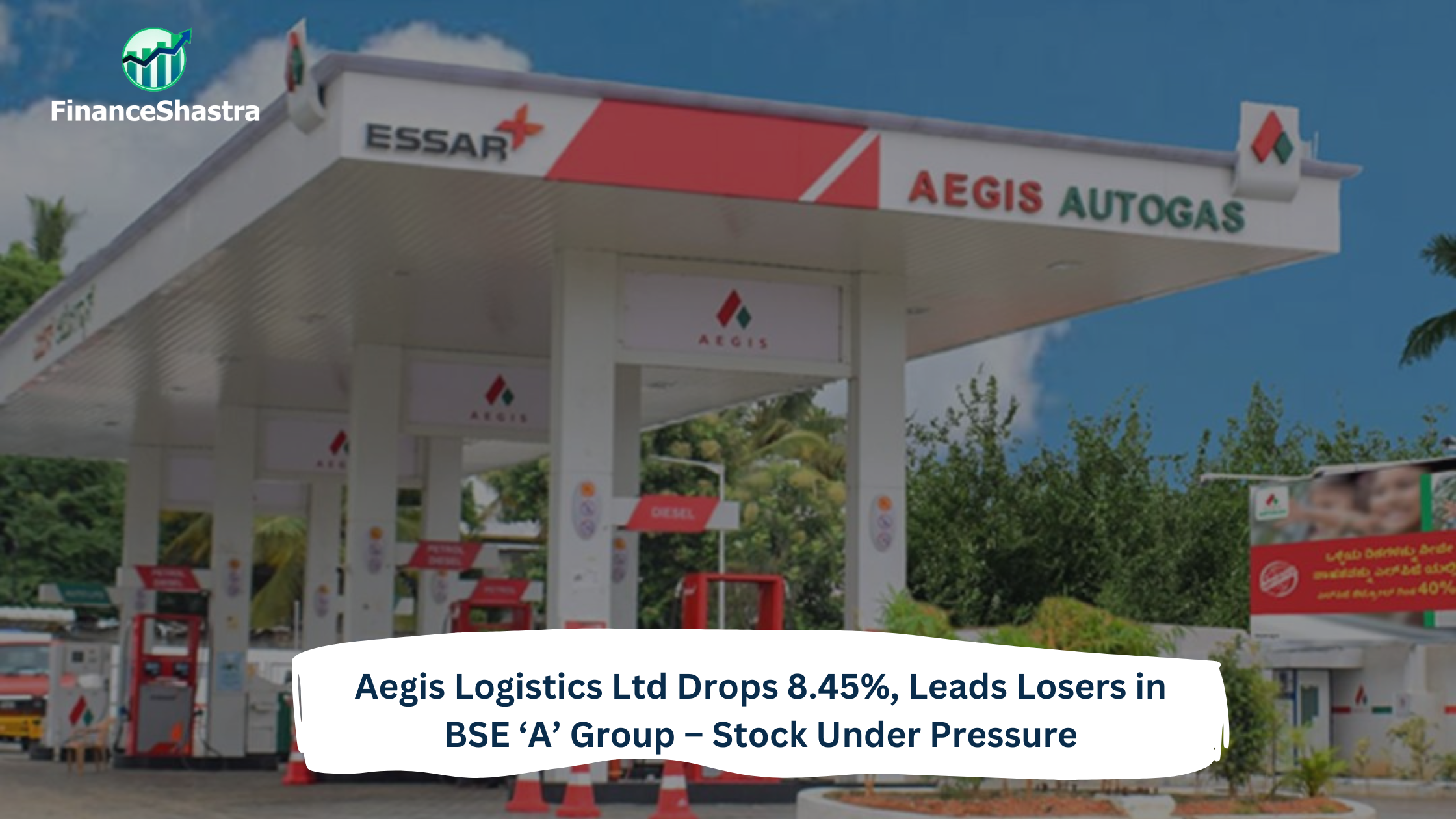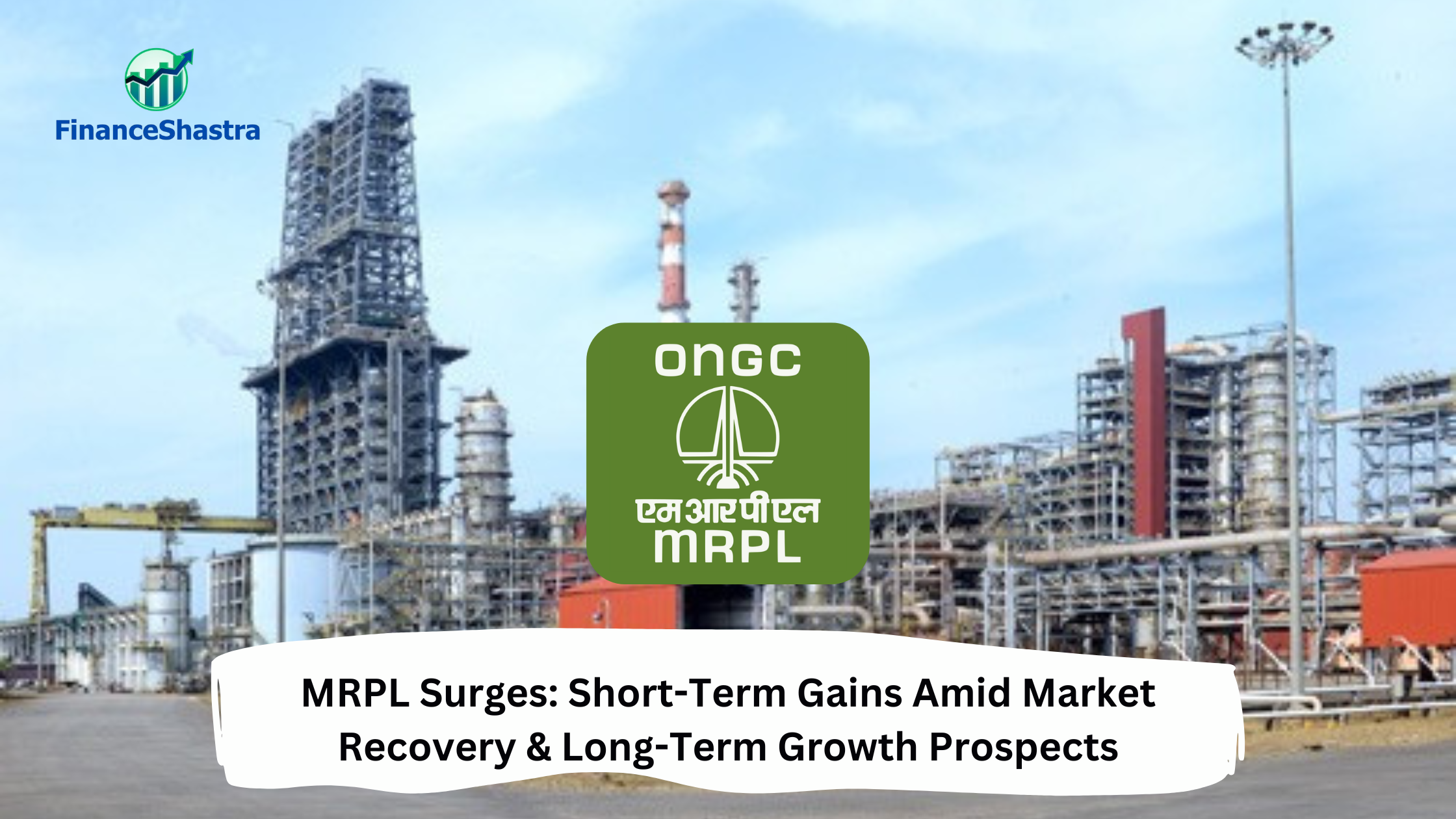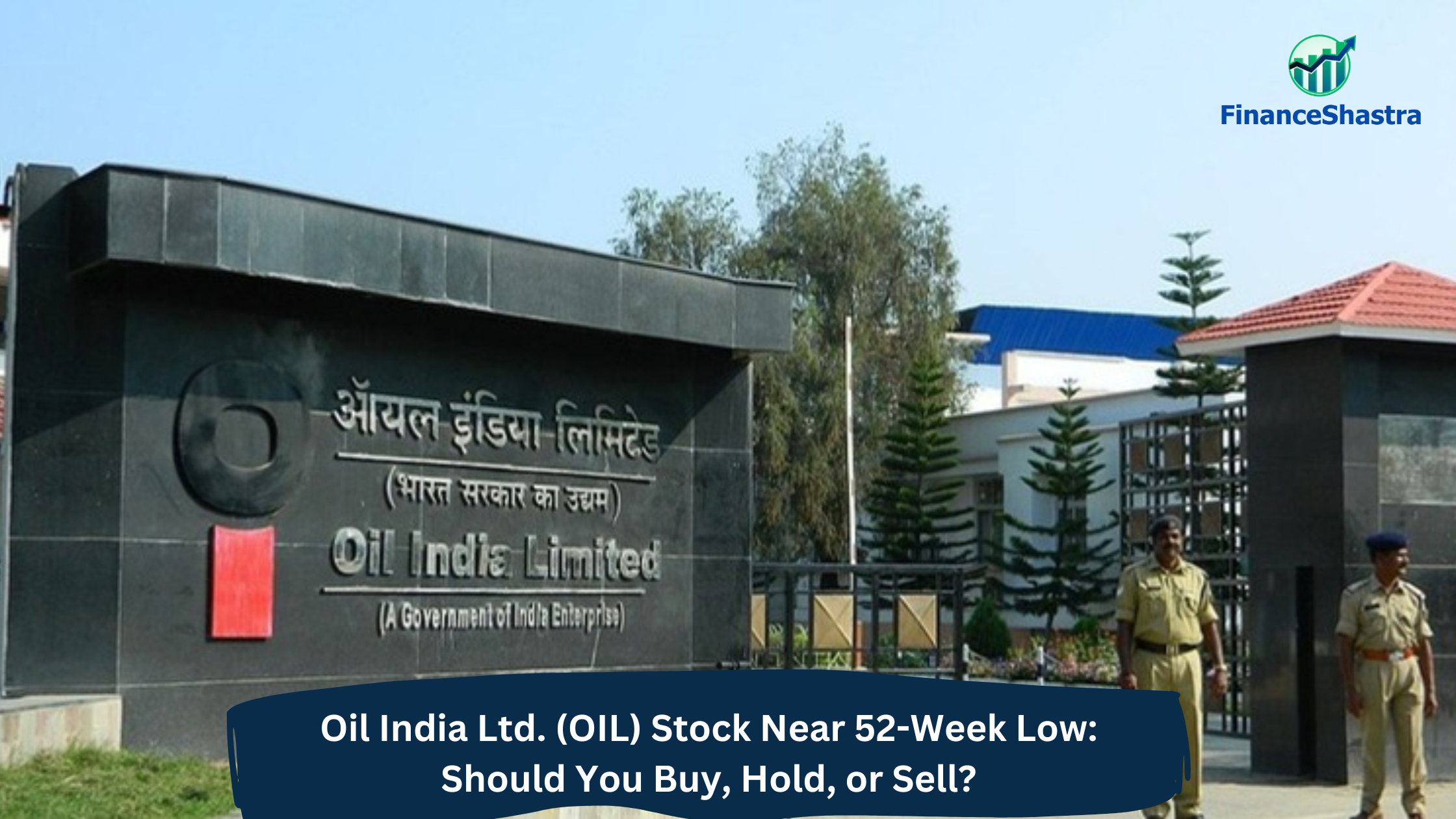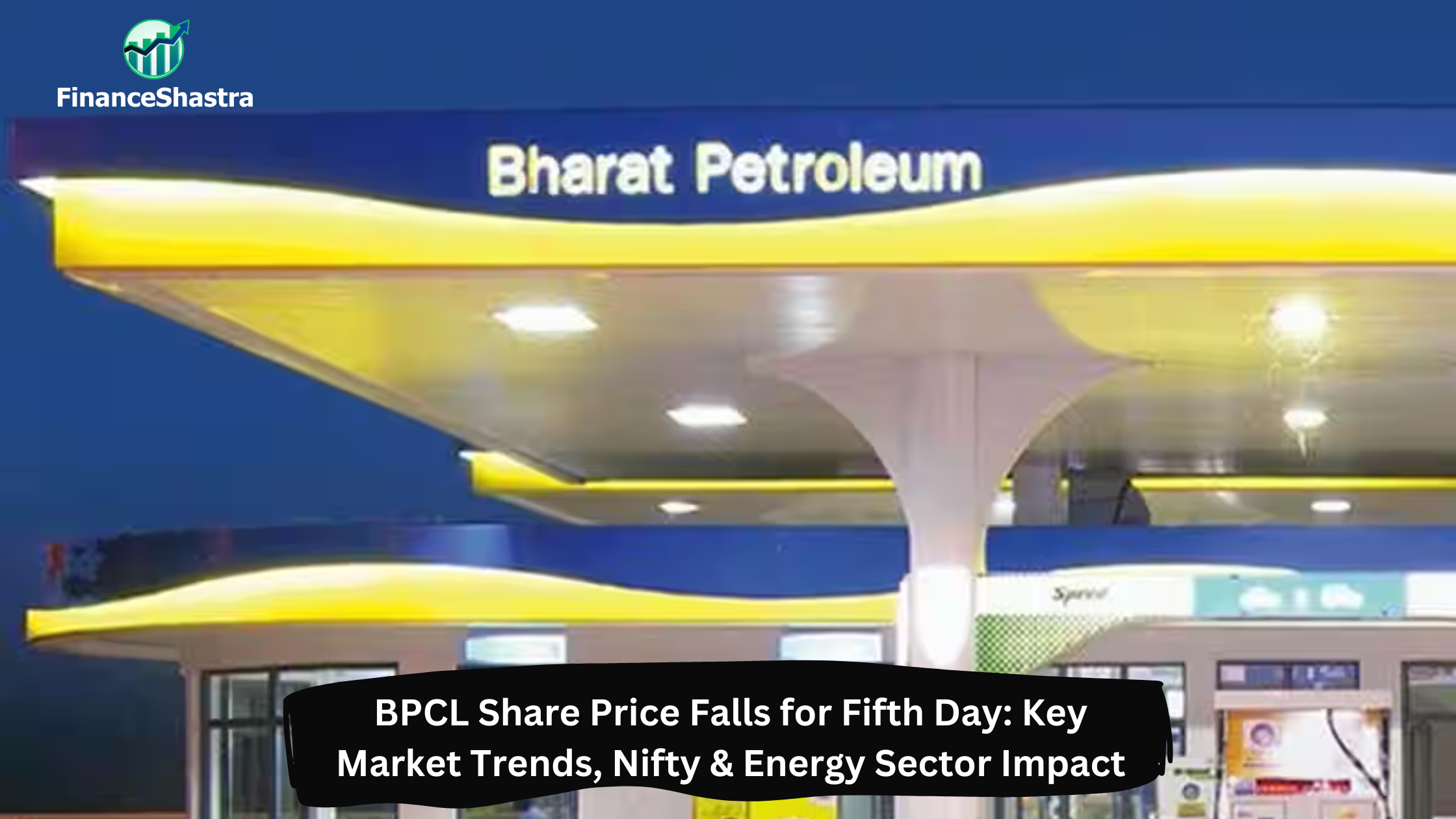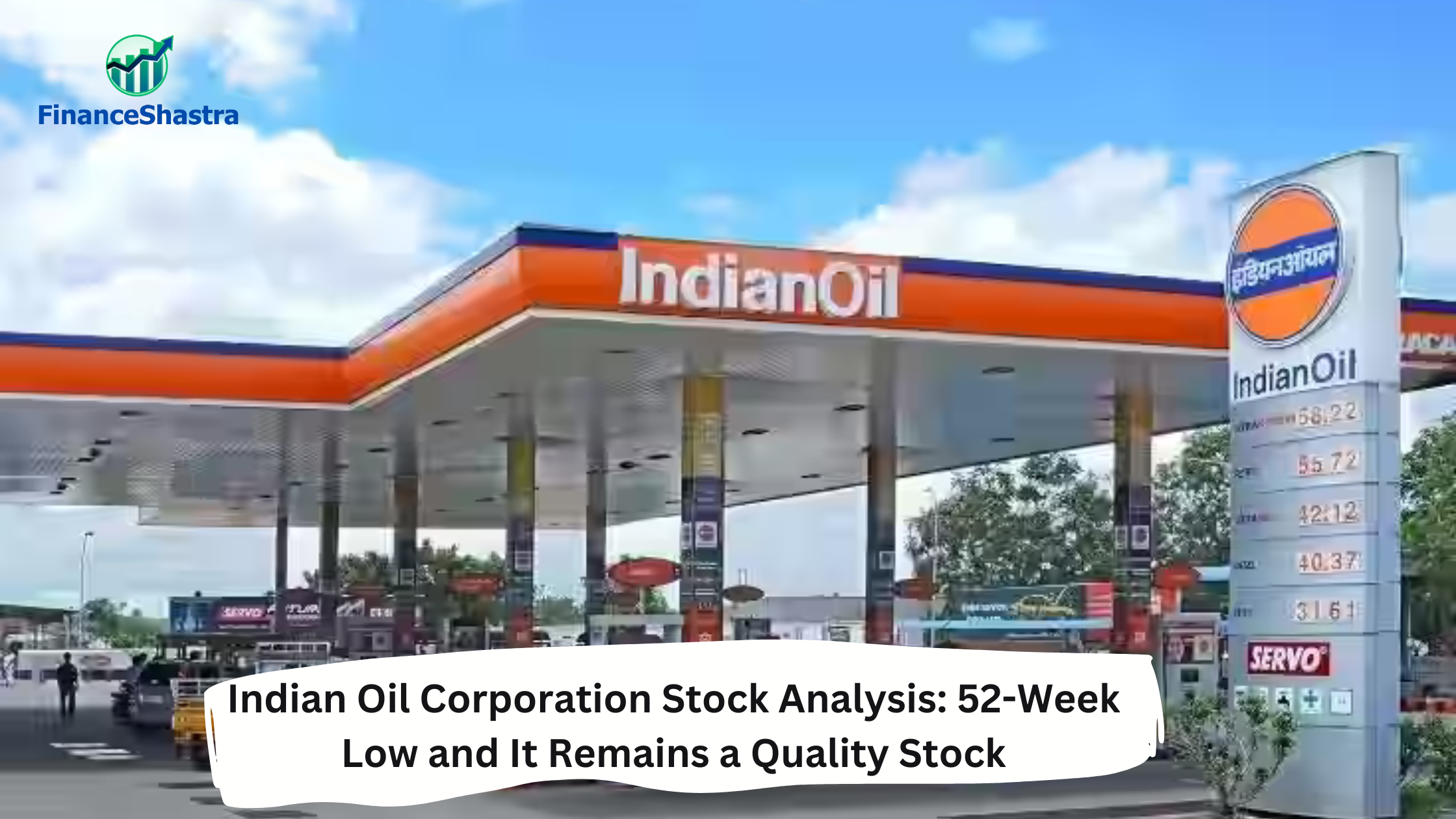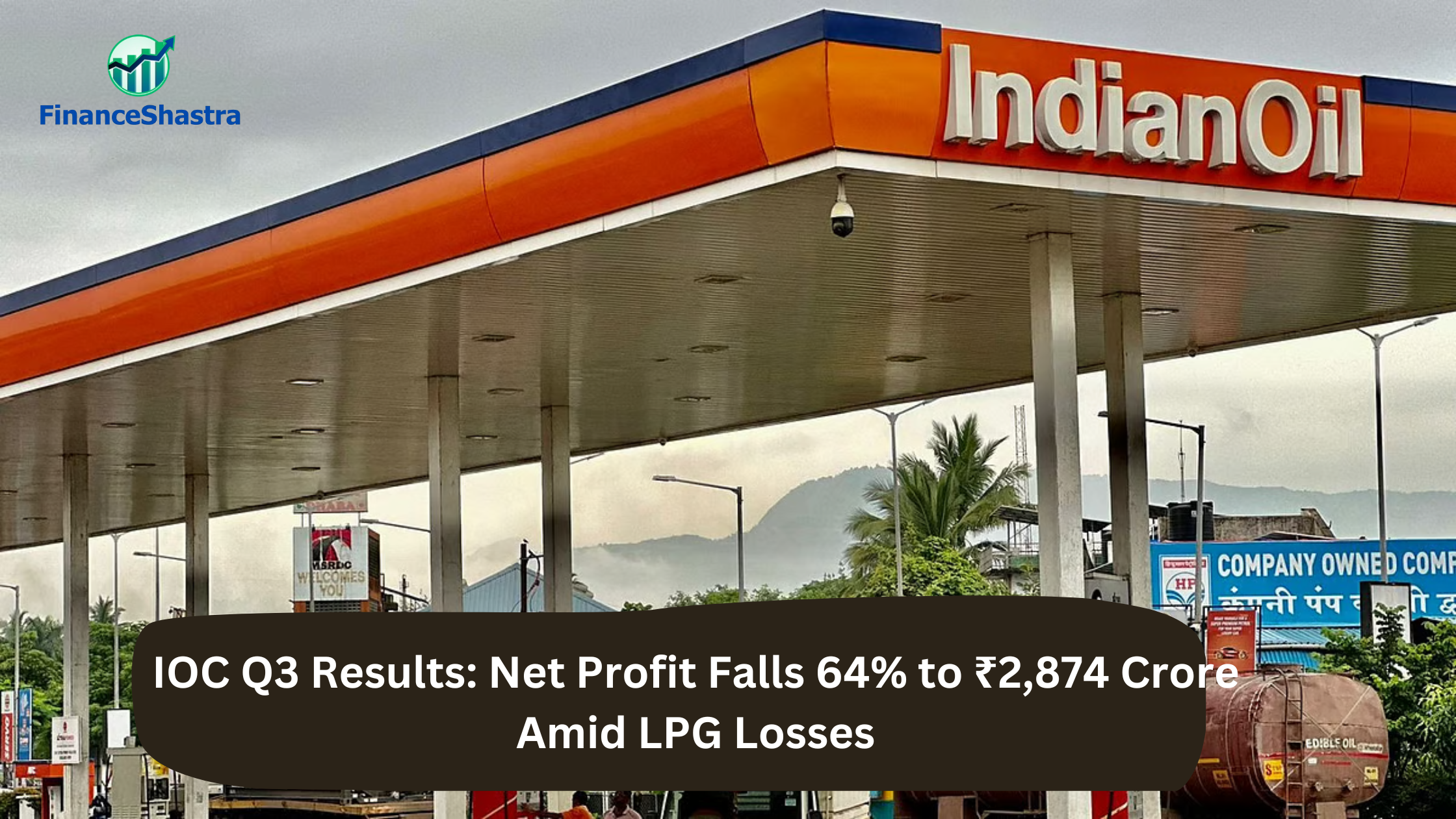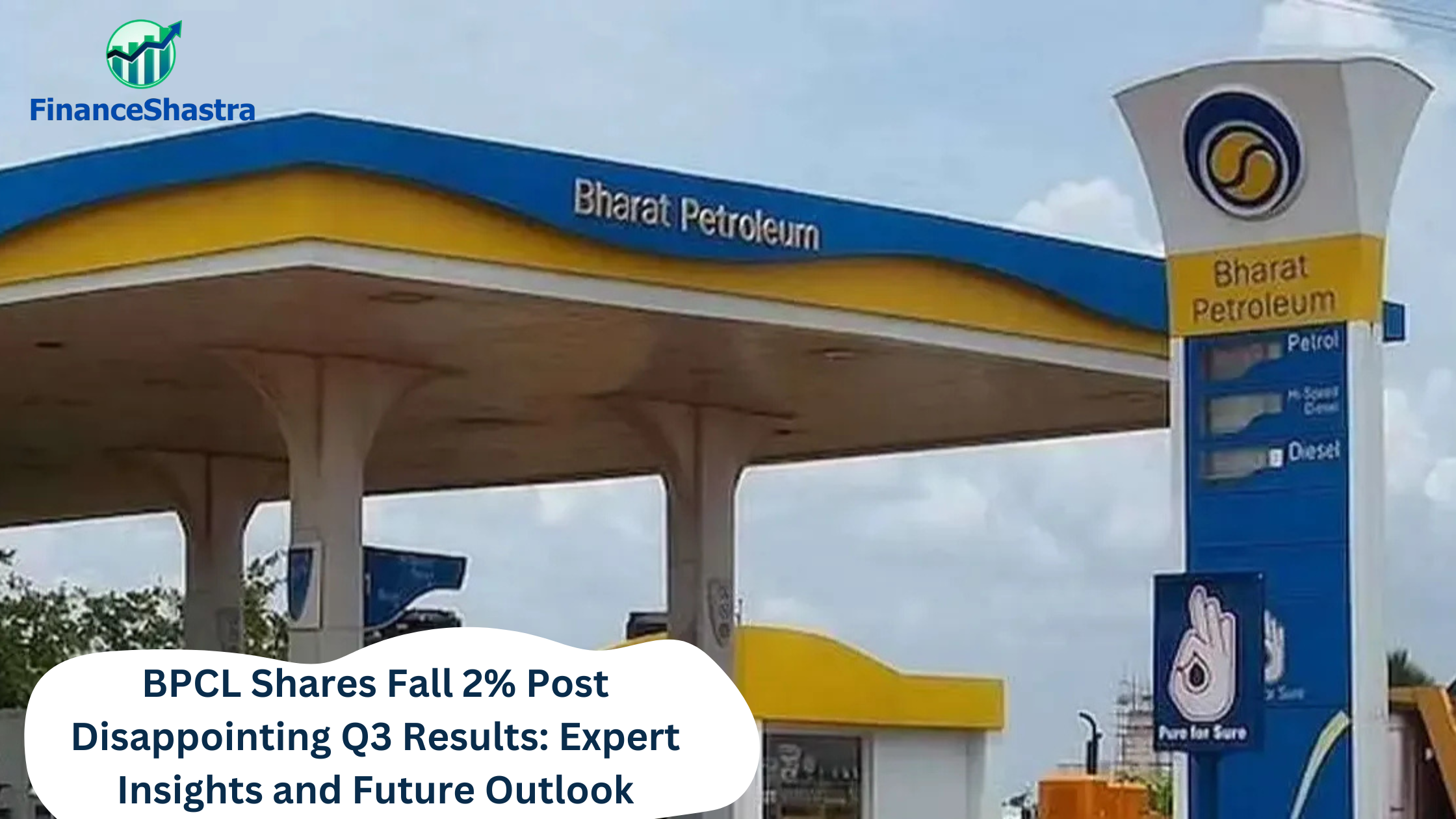Aegis Logistics Ltd Drops 8.45%, Leads Losers in BSE ‘A’ Group – Stock Under Pressure
Business and Industry Overview:
Aegis Logistics Ltd. is a big company in India. It works with oil, gas, and chemicals. It is one of the largest private companies that import and supply LPG (Liquefied Petroleum Gas). The company stores and transports fuel all over India. It has large storage terminals at many ports. These terminals can hold 1.57 million KL of chemicals and petroleum products. They can also store 114,000 MT of LPG. This helps ensure that fuel is always available for homes, businesses, and industries. Aegis started in 1956. Its head office is in Mumbai. It is a public company, so people can buy and sell its shares. It is listed on the Bombay Stock Exchange (BSE) and National Stock Exchange (NSE). The company has a strong business in LPG. It runs AutoLPG stations where vehicles can fill with gas. It has a large network of distributors. These distributors sell LPG cylinders to homes, restaurants, hotels, and factories. The company also installs LPG systems in industries. It helps factories switch from other fuels to LPG. This makes energy use cheaper, safer, and more efficient. Aegis focuses on safety and quality. It makes sure fuel is always available, even when demand is high. Since 2008, Aegis has been working to improve its operations. It follows Lean Six Sigma and 5S techniques. These methods help make work faster and safer. They also reduce waste and protect the environment. This has helped Aegis improve fuel delivery and quality. Aegis has strong financial ratings. It has an ‘IND AA/Stable’ rating for long-term loans. It also has an ‘A1+’ rating for short-term loans from India Ratings & Research. The company has top ratings for LPG supply from CARE. Aegis follows international safety and quality standards. It has ISO 45001:2018 for worker safety. It also has ISO 14001:2015 for environmental protection. Additionally, it has ISO 9001:2015 for quality control. As of March 2025, Aegis’s stock price was ₹796. Its total market value was ₹27,929 crore. The company is growing fast. It plays a big role in India’s energy sector. Aegis helps make fuel easier to access, safer to use, and better for the environment.
India’s oil, gas, and chemical logistics industry is growing fast. More people and businesses need fuel and chemicals every day. To meet this demand, companies are building new storage terminals and transport systems. India imports a large amount of crude oil and LPG. LPG is used for cooking, heating, and vehicles. Many industries are switching to LPG because it is cheaper and cleaner. The government is helping poor families get LPG connections through the PM Ujjwala Yojana. More hotels, restaurants, and factories are using LPG instead of coal or diesel. AutoLPG is also growing because it reduces pollution and costs less than petrol and diesel. The chemical industry in India is also expanding quickly. India produces bulk chemicals, specialty chemicals, fertilizers, and petrochemicals. These chemicals are used in food processing, personal care products, home cleaning items, and medicines. India is the 6th largest chemical producer in the world. It is the 3rd largest in Asia. The chemical industry contributes 7% to India’s GDP. Today, the industry is worth $220 billion. By 2030, it will reach $300 billion. By 2040, it will grow to $1 trillion. India exports many chemicals to other countries. Between April and September 2024, exports reached $14.09 billion. The demand for Indian chemicals is rising. Many companies that bought chemicals from China are now buying from India. Indian companies are expanding their production to meet this demand. The Dahej PCPIR project in Bharuch has received $12 billion in investment. This project will create 32,000 jobs. The PCPIR project in Paradip has received $8.84 billion. It will generate 40,000 jobs. The government is supporting the industry. It has launched Production-Linked Incentive (PLI) schemes to boost production. It has set aside $213.81 million for bulk drug parks. It has allocated $23.13 million to the Department of Chemicals and Petrochemicals. The government is opening 25,000 Jan Aushadhi Kendras. These will provide affordable medicines. It has also approved a plan for battery storage development. This will help promote clean energy. Investment in the chemical and petrochemical sector is rising. Foreign investment in chemicals (excluding fertilizers) has reached $22.70 billion since April 2000. The total investment in this sector will be $107.38 billion by 2025. On September 14, 2023, Prime Minister Narendra Modi announced development projects worth $6.11 billion. With rising demand, new investments, and government support, the oil, gas, and chemical logistics industry in India is growing fast. Companies are building new storage terminals, distribution centers, and chemical plants. This will create more jobs. It will boost businesses. It will help India become a global leader in the chemical industry.
Aegis Logistics Ltd. is a big company in India that stores and moves oil, gas, and chemicals. It is one of the largest private LPG importers in the country. The company has big storage tanks at many ports in India. These tanks help store fuel safely before sending it to homes, businesses, and factories. Aegis has a strong network of LPG distributors and AutoLPG stations. This makes it easy for people to get LPG for cooking, vehicles, and industries. The company follows strict safety rules and uses modern technology to make work faster and safer. Aegis also helps industries switch to LPG, which is cleaner and more efficient. Since 2008, Aegis has worked to improve its services by using better methods like Lean Six Sigma. It has good credit ratings, which help it borrow money at low interest rates to grow its business. Aegis competes with government oil companies and smaller firms. But its large storage, fast service, and strong network make it better than many competitors. As India’s demand for LPG and chemicals grows, Aegis has big opportunities to expand in the future.
Latest Stock News:
On March 28, 2025, Aegis Logistics Ltd.’s stock price dropped by 8.45%. The price fell to ₹826.85. It was the biggest loser in the BSE’s ‘A’ group that day. A total of 1.19 lakh shares were traded. This was much higher than the usual daily average of 52,752 shares in the past month. The sudden drop may be due to market conditions, investor reactions, or company news. Earlier, on January 6, 2025, the stock had gone up. It reached ₹923.05 on the BSE. On the NSE, it touched ₹924.6. This shows that the stock has been moving up and down a lot. On February 6, 2025, Aegis Logistics made an announcement. The company said a Board Meeting would be held on February 12, 2025. The purpose was to check and approve financial results. These results were for the quarter and nine months ending December 31, 2024. Financial results show the company’s income, expenses, and overall performance.
If the results are good, the stock price may rise. If the results are bad, the stock price may fall. Aegis Logistics’ stock has been changing a lot in 2025. Investors should follow news about the company. They should also check market trends to understand future stock movements.
Potentials:
Aegis Logistics wants to grow its business. It plans to build more storage terminals at big ports in India. These terminals will store oil, gas, and chemicals. More storage will help the company serve more customers. The company is focusing on its LPG business. It will open more Autogas stations for vehicles. It will also expand its LPG supply to homes, businesses, and industries. Aegis helps industries switch from other fuels to LPG. LPG is a cleaner and cheaper fuel. Aegis is using better technology. It wants to make storage and transport safer and faster. The company is improving safety to reduce risks. It follows special work methods to make operations better and faster. Aegis is looking for new business copportunities. It may expand to other countries. It also wants to work with other companies. This will help Aegis reach more customers. The company cares about the environment. It follows rules to reduce pollution. It is also working on cleaner fuel solutions. This will help India’s clean energy goals. Aegis wants to stay a leader in its industry. It will keep expanding, improving safety, and using new technology. It will also focus on eco-friendly practices. These steps will help Aegis grow and serve more people.
Analyst Insights:
- Market Cap: ₹28,271 Cr.
- Current Price: ₹805
- 52-Week High/Low: ₹1,037 / ₹430
- Stock P/E: 48.9
- Book Value: ₹117
- Dividend Yield: 0.81%
- ROCE: 14.7%
- ROE: 15.1%
Aegis Logistics has grown well in the last few years. Its profits have increased by 20.5% every year in the last five years. This means the company is making more money every year. It is also keeping more profit from its sales. Earlier, it kept ₹8 as profit from every ₹100 earned. Now, it keeps ₹13-₹14. The company is handling its money better. Earlier, it took 66 days to get payments from customers. Now, it takes only 26 days. This helps the company use its cash faster. It is also using its money wisely. The return on capital is 14.7%, which is a good sign. Sales are growing fast. They have increased by 22% every year in the last three years. The stock price has also grown by 56% every year in the last five years. But the stock is expensive now. Its P/E ratio is 48.9, which is higher than many similar companies. This means investors are paying a high price for each rupee of profit. One risk is the company’s high debt of ₹4,374 crore. This can be a problem if interest rates go up or if the company faces any trouble. But the company also pays 36% of its profits as dividends. This is good for investors who want regular income. Aegis Logistics is a strong company with good growth. But its high price and large debt are risks to consider before investing.

